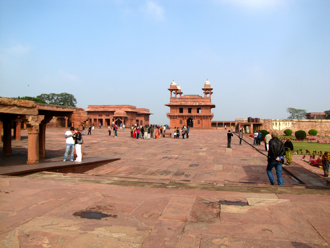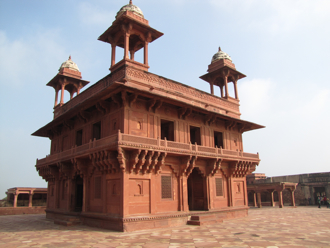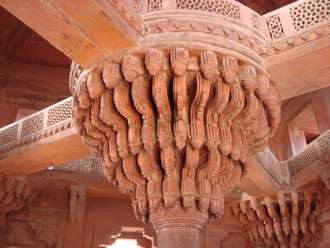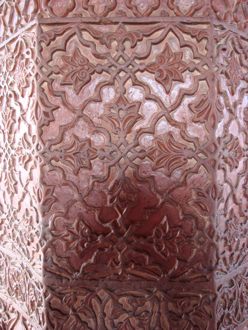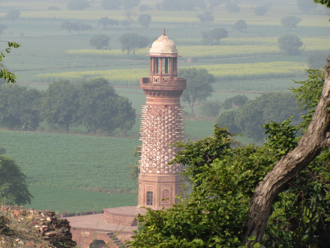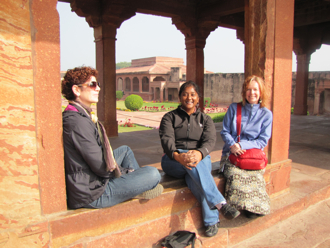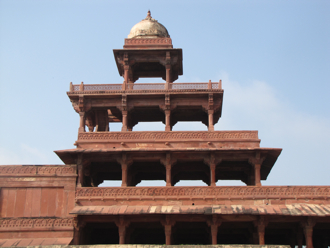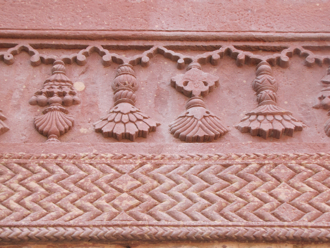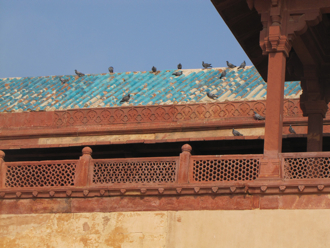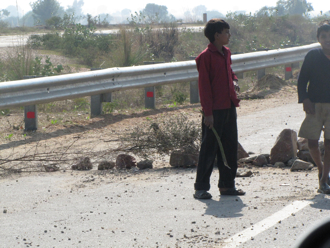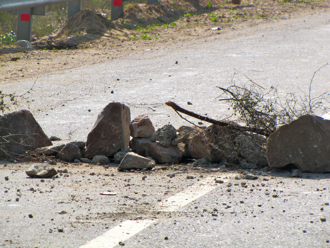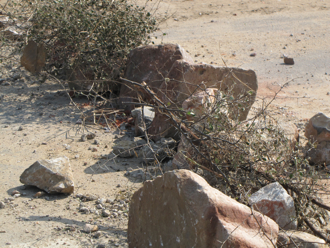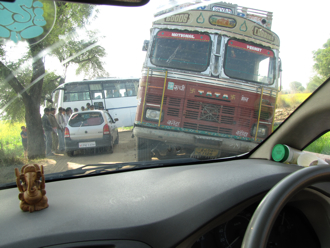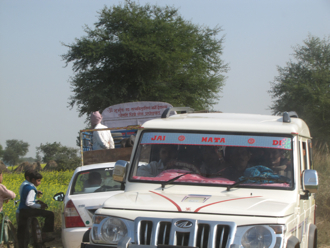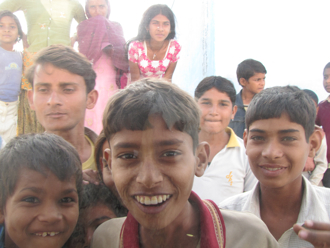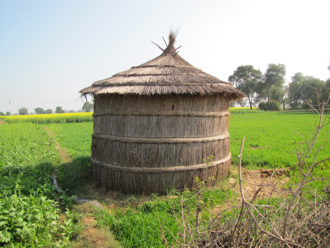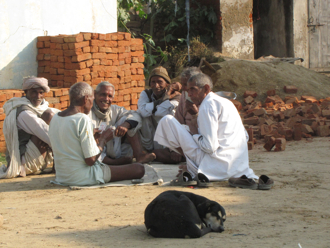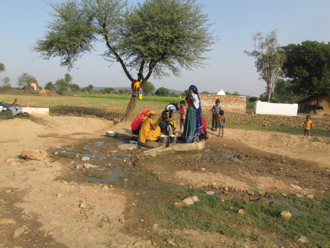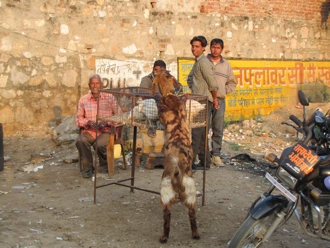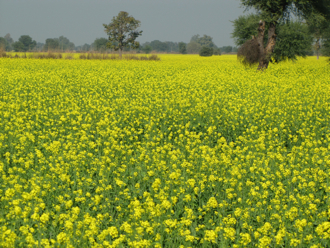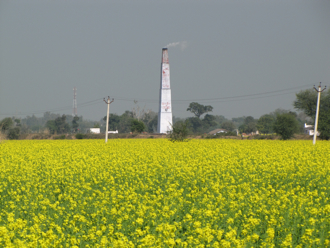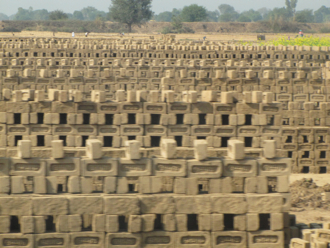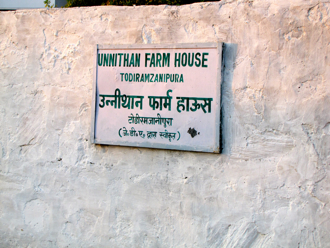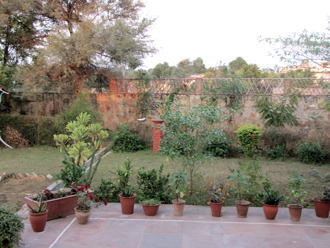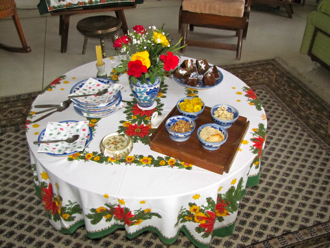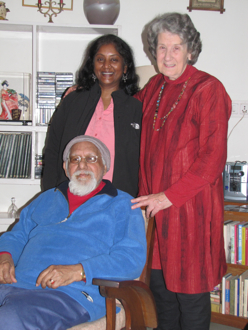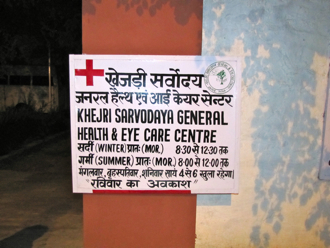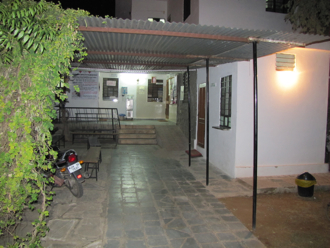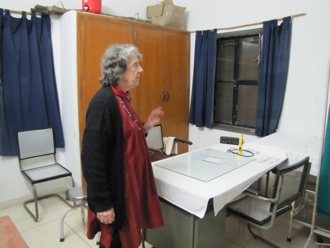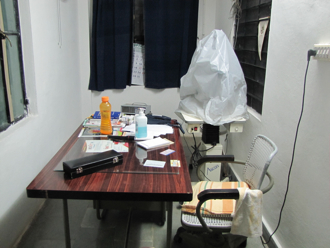Fatehpur Sikri
About an hour outside of Agra, we visited a famous fort called Fatehpur Sikri, built in the 1500s. It was more like a walled city than a fort. We saw the remains of many buildings, from a mosque to the ladies’ quarters.
Gujjars Block the Road to Jaipur
Our biggest scare of the trip occurred on the road to Jaipur. We had been warned that a group of people living in this area, the Gujjars, were engaged in a protest against the government. They wanted to be recognized as a tribe, in order to get some benefits from the government. The government was dragging its feet. So in protest, the Gujjars had blocked the rail lines and they were also rumored to have blocked the roads.
We started driving to Jaipur at about noon. For the first half hour or so, the road seemed fine. Then the problem came: a large group of stones placed across the highway. There was no way to drive through. All the cars had to turn around and go back to the nearest country road that branched off from the highway.
Our driver did not want to take this country road detour. He warned us that we might be on the road until late at night, and that there would be no food and no bathrooms along the road. Yikes! We called our travel agent and asked him what to do – should we skip Jaipur? The travel agent downplayed the problem and told us to push forward. The delays would not be so bad. Anxiously, we directed the driver to keep heading toward Jaipur.
The country road that we turned off on was a tiny dirt lane that was barely wide enough for one car. It was immediately crowded to bursting with all the cars, trucks, and tour buses that had been on the highway. Then we started to encounter traffic coming the other way! Progress was extremely slow – we sat motionless for long periods of time while a tour bus figured out how to navigate around a truck, and so forth. Meanwhile we provided entertainment for all the village people lining the road – grown-ups stared at us, and children smiled and waved.
Eventually the traffic cleared and we were able to move forward at a more normal pace – keeping in mind that we were on a dirt road. We started to enjoy our unexpected tour of country life. We drove past mustard fields and tiny villages built out of what looked like adobe and thatch. Women in bright saris worked in the fields. A group of men played cards in a courtyard. I was struck by the beauty all around us, from the blooming mustard to the graceful design of even the humblest human artifacts. Although this lifeway was very rural, it seemed much more appealing than the conditions of the urban poor.
To our surprise, the little dirt road took us back to the main highway after only about 20 miles. Once on the main road, we stopped for an outdoor lunch at simple restaurant; the weather was perfect and the food was excellent.
Afterwards, as we continued down the highway, we encountered only one other roadblock. This time the detour only lasted about eight miles. And after that, it was smooth sailing all the way to Jaipur, which we reached at about 5 pm. So everything worked out fine in the end. In fact, we were grateful for being exposed to village life in a way that we never would have been without the Gujjar protest!
Gerda and T.K. Unnithan
Our first activity in Jaipur was to visit friends of Shobhana’s family, Dr. Unnithan and his wife Gerda, who is originally from the Netherlands. Dr. Unnithan is a professor of sociology at the University of Rajasthan, and Gerda is the founder of a medical clinic for the poor, especially women and children. They were lovely people and most hospitable.
Gerda gave us a fascinating tour of the medical clinic, which was adjacent to their home.
